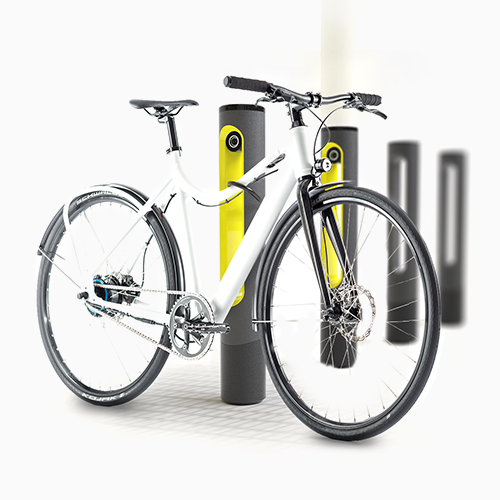E-Bike Charging Station: Rising Popularity of E-Bikes Drives

Electric bicycles, also known as e-bikes, have seen tremendous growth in popularity over the past few years as people seek greener and more convenient transportation options. With the battery-powered bicycles becoming more affordable and capable, their adoption is accelerating. However, one challenge that comes with the rise of e-bikes is the need for sufficient charging infrastructure.
The Rapid Growth of E-bikes
E-bikes first started gaining popularity in Europe and Asia around a decade ago. In recent years, they have picked up steam in North America as well. Sales of e-bikes in the United States nearly doubled between 2018 to 2020. Their appeal lies in the fact that they combine the exercise and fresh air of cycling with electric motor assist, extending the range and making hills easier. For many, e-bikes provide a convenient way to commute shorter distances or run errands while avoiding traffic. With big bicycle companies like Trek, Cannondale and Giant now offering extensive e-bike lines, they are becoming quite accessible to average consumers. Research firms forecast e-bike sales to continue growing by 15-25% annually in the coming years.
The Need for Charging Infrastructure
While e-bikes solve the problem of bicycle short-range transportation, their batteries need to be recharged regularly. Most e-bike batteries last for 20-40 miles on a single charge depending on the model and how much electric pedal-assist is used. For daily commuters and urban residents completely reliant on their e-bikes, finding places to charge can be challenging without public infrastructure. Leaving an e-bike unattended for hours while it charges also raises security concerns. To address this, various city administrations and companies have started setting up e-bike charging stations in high traffic areas.
Models of E-bike Charging Stations
There are a few common models for e-bike charging stations that have emerged:
- Docking stations: These allow locking the e-bike securely to the station while it charges. Many have multiple docks and built-in lockers for storage. They are most suitable for busy urban centers.
- Portable chargers: Resembling portable phone chargers, these plug into normal electrical outlets to charge 1-2 bikes at a time. Helpful for cafes, shops or workplace charging.
- Solar charging stations: For areas off the grid, some stations harness solar power to charge e-bike batteries during the day. Useful for parks, trails.
- Bikeshare integration: Public bikeshare programs are adding e-bikes and designing stations that can charge their rental fleets overnight.
- At-home communal charging: Many apartment buildings and co-living communities install wall-mounted docking stations for residents in common areas.
Funding and Growth Trends
Setting up widespread charging infrastructure requires significant investment but provides economic benefits. Many cities see it as essential to promoting electric mobility goals. Some have partnered with companies dedicated to operating stations and are subsidizing installations. For example, Seattle and Portland received millions in grants to erect dozens of stations each. In Europe, countries like the Netherlands and Denmark heavily fund infrastructure development. Meanwhile, startup networks like Zomo charging bars are tapping into private funding to deploy thousands of stations internationally. As more cities follow suit with incentives and dedicated funding streams, e-bike charging infrastructure will continue its rapid worldwide growth in the coming years to support sustainable transportation networks.
Charging Considerations and Technologies
When designing stations, there are key technical factors to consider for safe and efficient charging:
- Power capacity: Stations need sufficient power supply and capacity to handle simultaneous charging of multiple e-bikes within a reasonable time frame.
- Connectors: Standards are still emerging but most use specialty e-bike connectors not meant for swapping between bikes. Some stations offer multiple connector types.
- Payment options: Many stations partner with apps for contactless payment via QR codes, credit cards or transit cards to initiate charging sessions.
- Solar options: For standalone solar powered stations, adequate battery storage and MPPT charge controllers are important for optimizing solar yield.
- Security: Features like integrated locks, protective casings and tamper monitoring ensure unattended e-bikes and batteries remain secure.
- Accessibility: Stations should accommodate a variety of e-bike styles, have clear instructions and be conveniently accessible for everyone including those with disabilities.
As charging technology progresses, we may see integration of options like wireless charging pads at stations. Overall, networks of thoughtfully designed charging sites addressing key usability factors will go far in supporting the continued adoption of environmentally-friendly micromobility.
Get more insights on this topic: https://www.newsanalyticspro.com/the-e-bike-charging-station-revolution/
- Art
- Causes
- Crafts
- Dance
- Drinks
- Film
- Fitness
- Food
- Игры
- Gardening
- Health
- Главная
- Literature
- Music
- Networking
- Другое
- Party
- Religion
- Shopping
- Sports
- Theater
- Wellness
- IT, Cloud, Software and Technology


